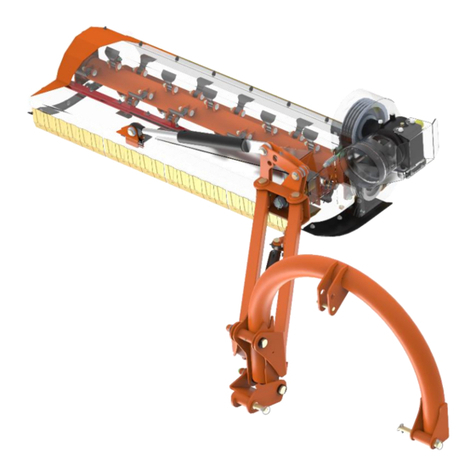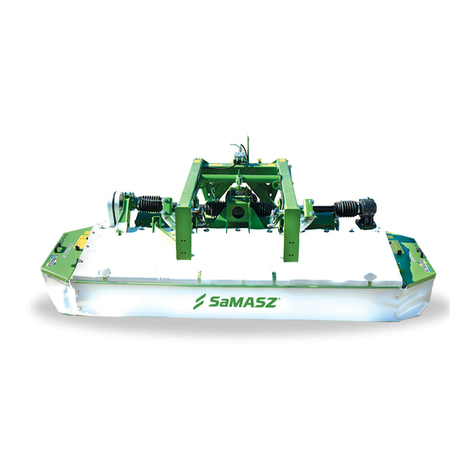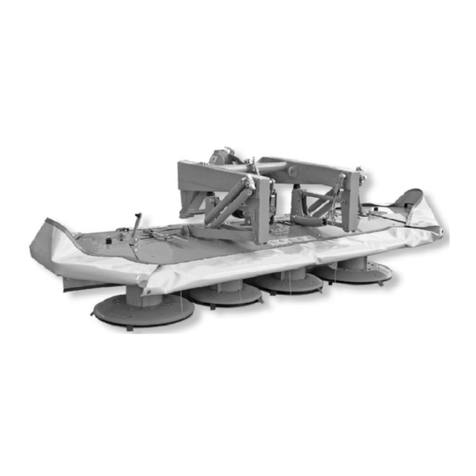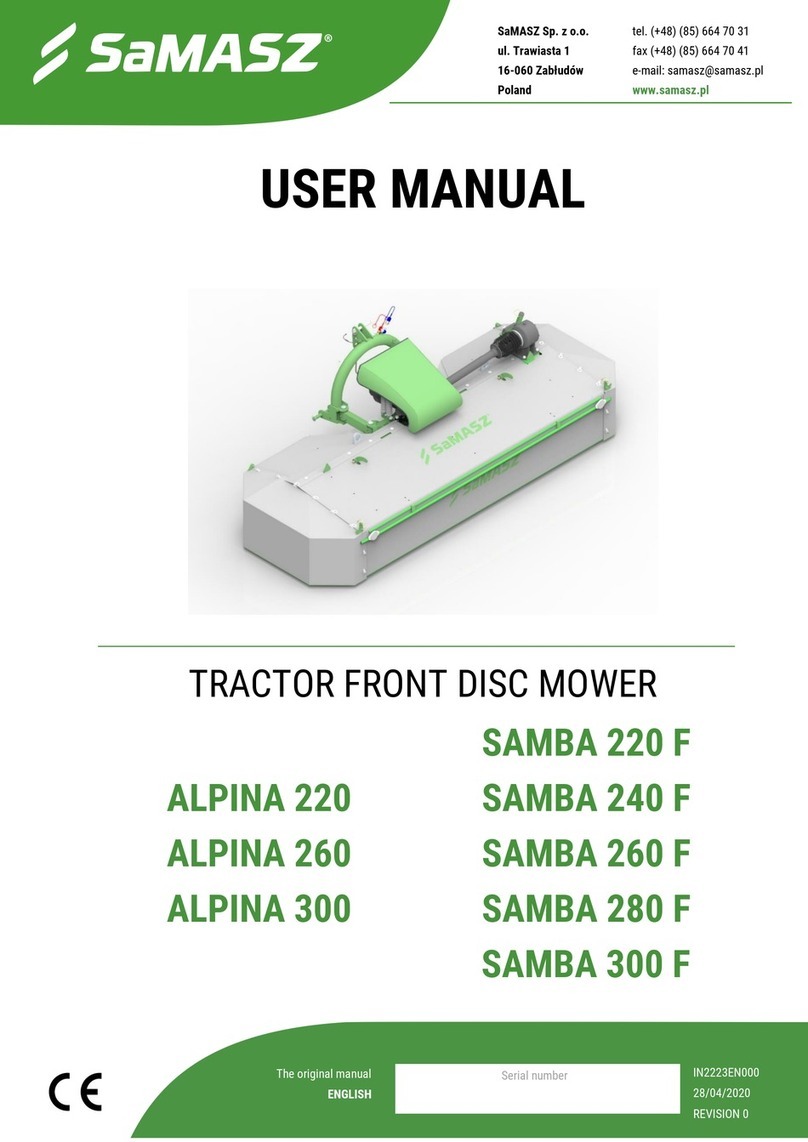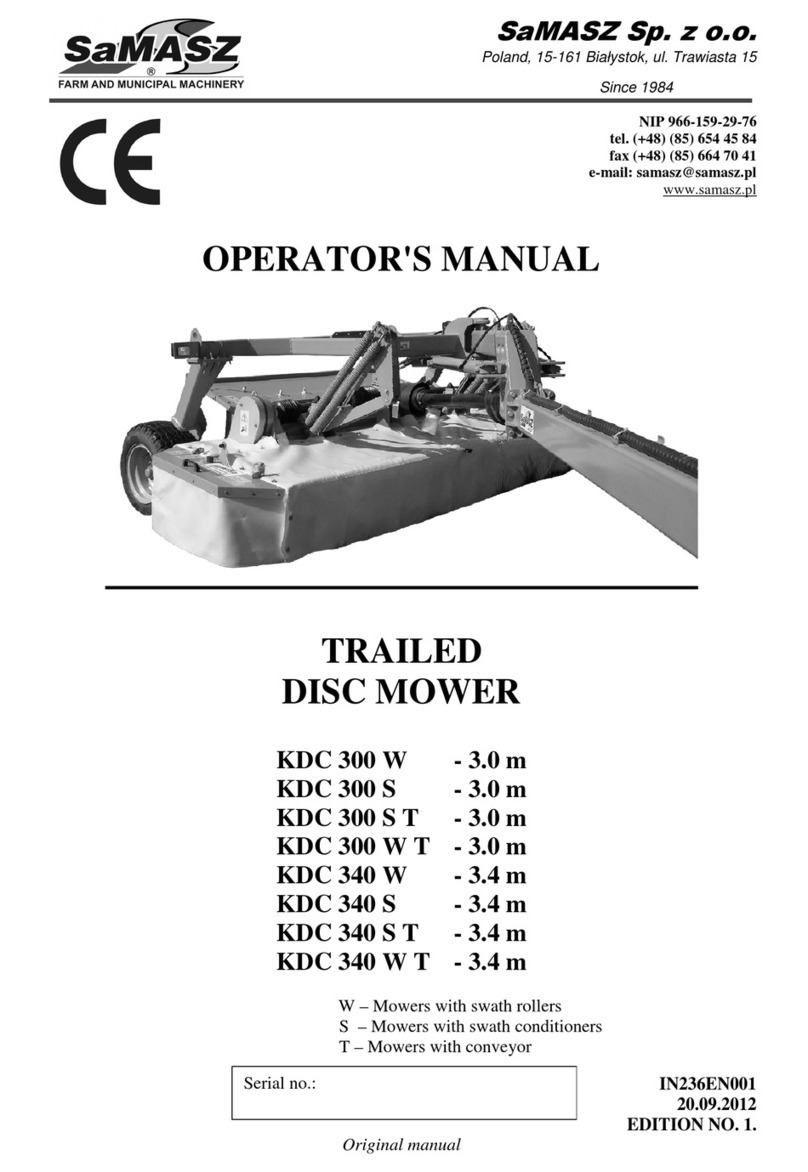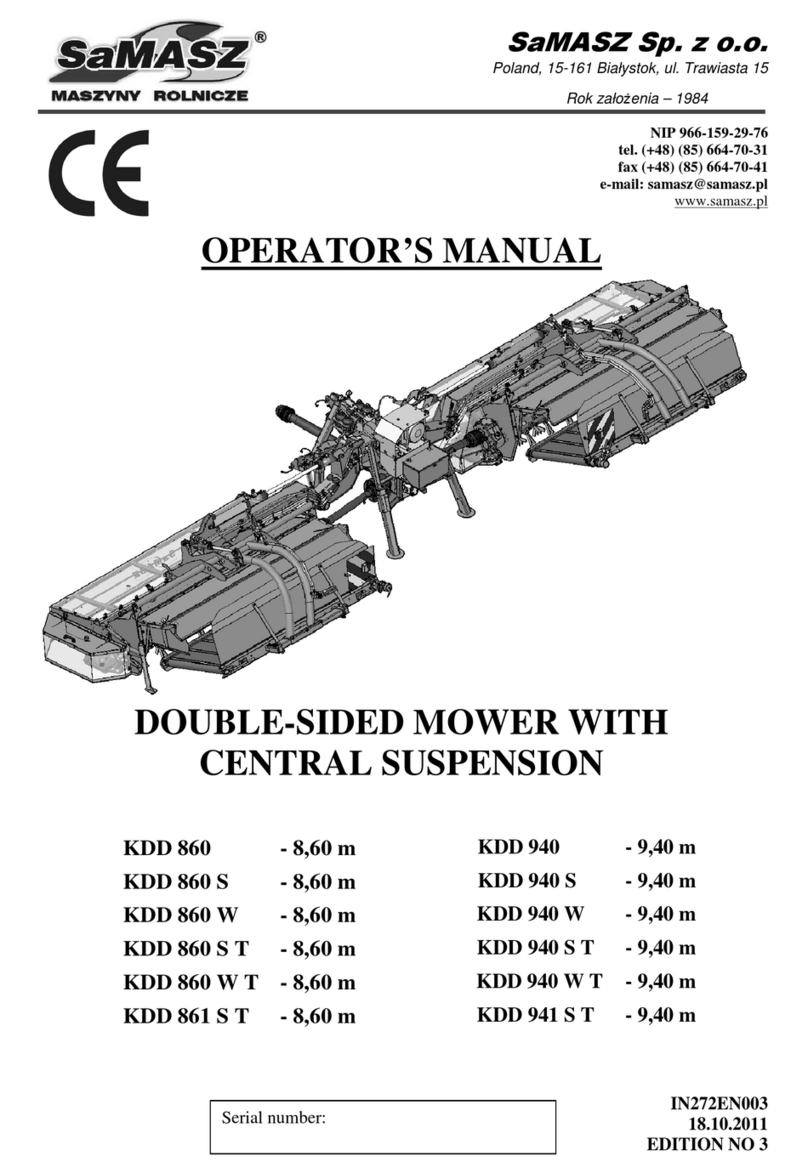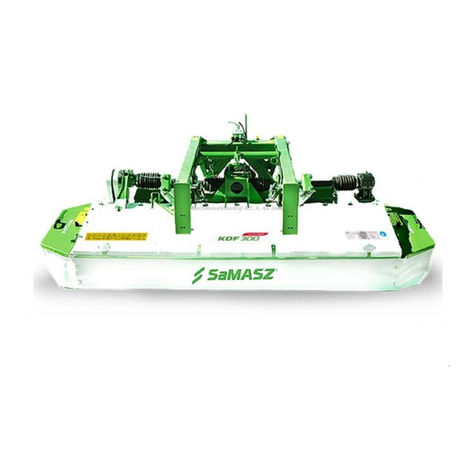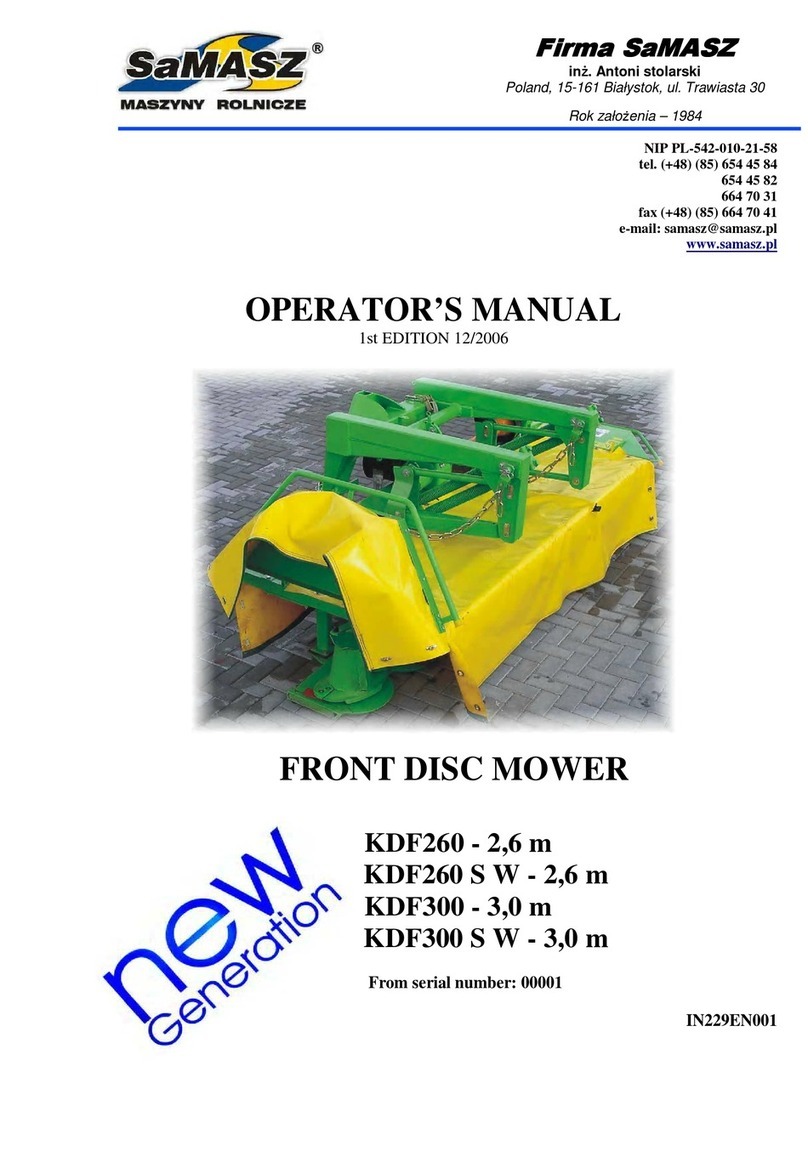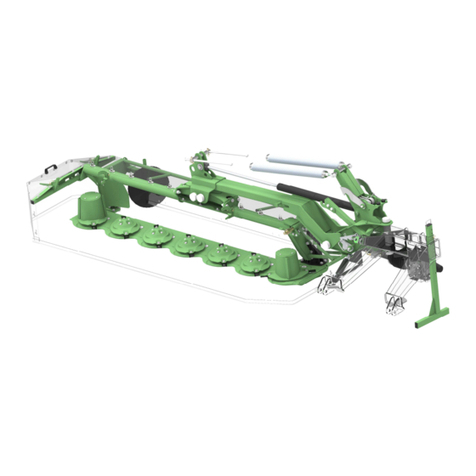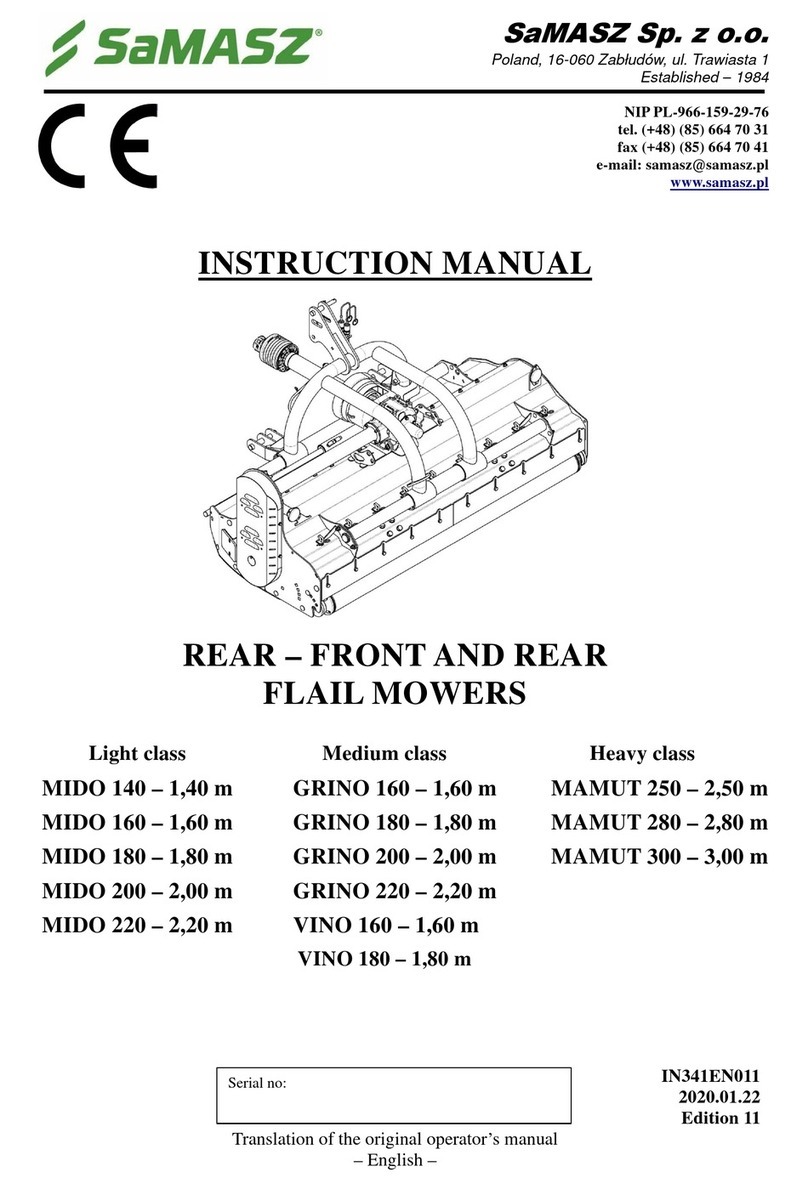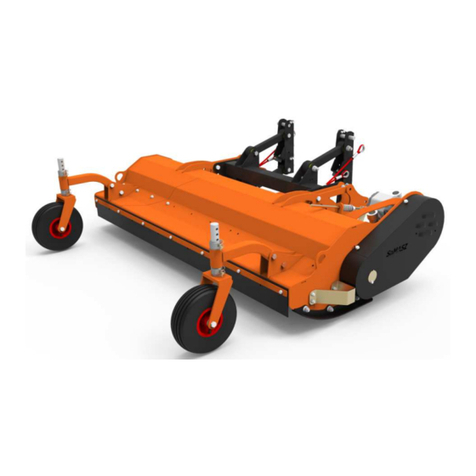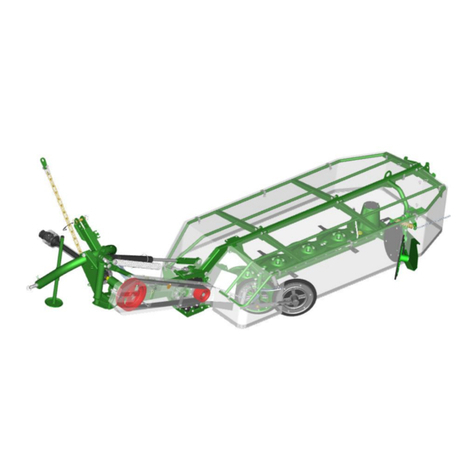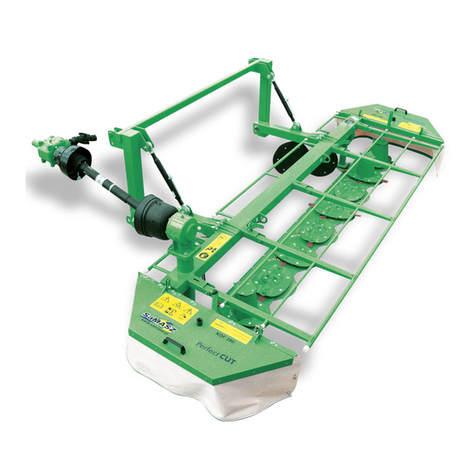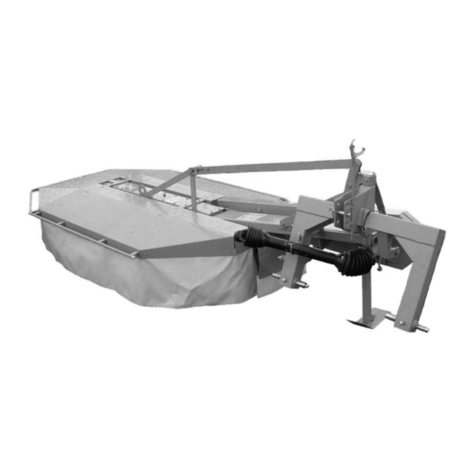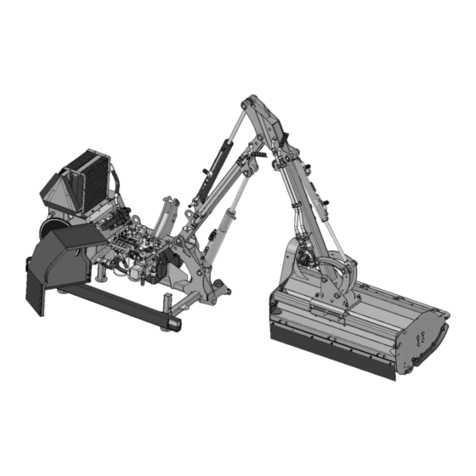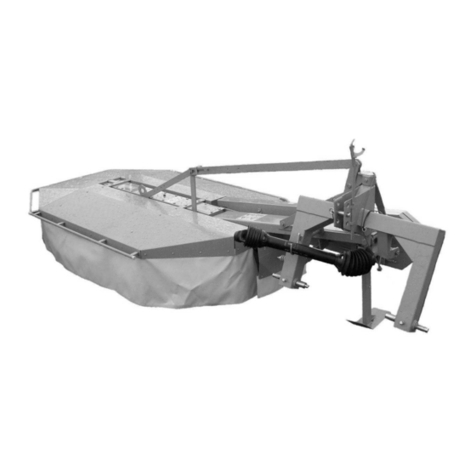
Operating manual
Rear disc mower with central suspension
- hydro-pneumatic or spring suspension
- 1 -
1. IDENTIFYING THE MACHINE ....................................................................................................................................2
2. INTRODUCTION .............................................................................................................................................................2
3. PROPER AND INTENDED USE.....................................................................................................................................3
3.1. Technical data ................................................................................................................................................................4
3.2. Design and working principle........................................................................................................................................6
3.3. Standard equipment and spare parts...............................................................................................................................9
4. SAFETY PRECAUTIONS..............................................................................................................................................10
4.1. General safety rules and regulations ............................................................................................................................11
4.2. Conditions of mounting mower on tractor ...................................................................................................................12
4.3. Transport......................................................................................................................................................................12
4.3.1. Placing the mower onto a transport vehicle ........................................................................................................13
4.4. Working parts .............................................................................................................................................................. 14
4.5. PTO shaft ..................................................................................................................................................................... 14
4.6. Safety curtains.............................................................................................................................................................. 14
4.7. Residual risk ................................................................................................................................................................15
4.7.1. Danger of machine entanglement........................................................................................................................15
4.7.2. Danger of cutting injury......................................................................................................................................15
4.7.3. Danger of injury from liquid ejection out of hydraulic system ...........................................................................15
4.7.4. Forbidden actions................................................................................................................................................ 15
4.7.5. Residual risk assessment ..................................................................................................................................... 15
4.8. Safety labels and their meaning ...................................................................................................................................16
4.9. Design and operation of hydraulic safety breakaway device .......................................................................................20
5. OPERATION OF THE MOWER ..................................................................................................................................21
5.1. Attaching the mower to the tractor...............................................................................................................................21
5.2. Mounting PTO shaft .................................................................................................................................................... 22
5.3. Preparing mower for operation – mower with hydro-pneumatic suspension ............................................................... 23
5.3.1. Gas pressure in the accumulator and in the entire system for each mower model .............................................. 24
5.4. Preparing mower for operation – mower with spring suspension ................................................................................ 24
5.5. Operating the mower....................................................................................................................................................25
5.5.1. Essential information concerning mowing.......................................................................................................... 25
5.5.2. Mower clogging ..................................................................................................................................................26
5.6. Preparing the mower for transport ...............................................................................................................................26
5.7. Preparing the mower for transport on public roads ......................................................................................................27
5.8. Moving from transport to working position................................................................................................................. 28
5.9. Disconnecting mower from tractor ..............................................................................................................................29
6. MOUNTING AND ADJUSTMENTS ............................................................................................................................29
6.1. Assembling / disassembling main frames ....................................................................................................................29
6.2. Mounting and timing of cutting blades ........................................................................................................................30
6.3. Blade replacement........................................................................................................................................................30
6.4. Adjusting the cutterbar................................................................................................................................................. 31
6.5. Setting mowing height ................................................................................................................................................. 33
6.6. Use and adjustment of load reducing chain..................................................................................................................34
6.7. Adjusting cutterbar’s pressure on the ground by means of support springs.................................................................34
6.8. Adjustment of the clearance between the cover and the roller of the conditioner........................................................35
6.9. Replacing conditioner tines..........................................................................................................................................35
6.10. Adjusting force of the pressure of roller conditioner ................................................................................................... 36
6.11. Maintenance and service..............................................................................................................................................37
6.11.1. Checking the blades and blade holders ...............................................................................................................37
6.11.2. Checking the tension of tine and roller conditioners’ driving chain.................................................................... 37
6.11.3. Daily maintenance...............................................................................................................................................38
6.11.4. After-season maintenance and storing of machine..............................................................................................38
7. LUBRICATION............................................................................................................................................................... 39
7.1. Cutterbar ......................................................................................................................................................................39
7.2. Intersecting axis gears..................................................................................................................................................39
7.3. Roller conditioner’s gearbox........................................................................................................................................40
7.4. Bearings .......................................................................................................................................................................41
7.5. Risks present when lubricating ....................................................................................................................................41
8. MALFUNCTIONS AND THEIR REPAIRS.................................................................................................................42
9. DISASSEMBLY AND WITHDRAWAL FROM USE .................................................................................................43
9.1. Scrapping .....................................................................................................................................................................43
10. HYDRAULIC SCHEME.................................................................................................................................................43
10.1. Hydraulic scheme of rear disk mower with swath conditioner ....................................................................................43
10.2. Hydraulic scheme of rear disk mower with hydro-pneumatic suspension ...................................................................44
11. WARRANTY CARD....................................................................................................................................................... 45
12. WARRANTY TERMS .................................................................................................................................................... 45
12.1. Warranty claims procedures.........................................................................................................................................45
12.2. Warranty repairs record ...............................................................................................................................................46
APPENDIX CALCULATING AXIS LOAD ..........................................................................................................................47
